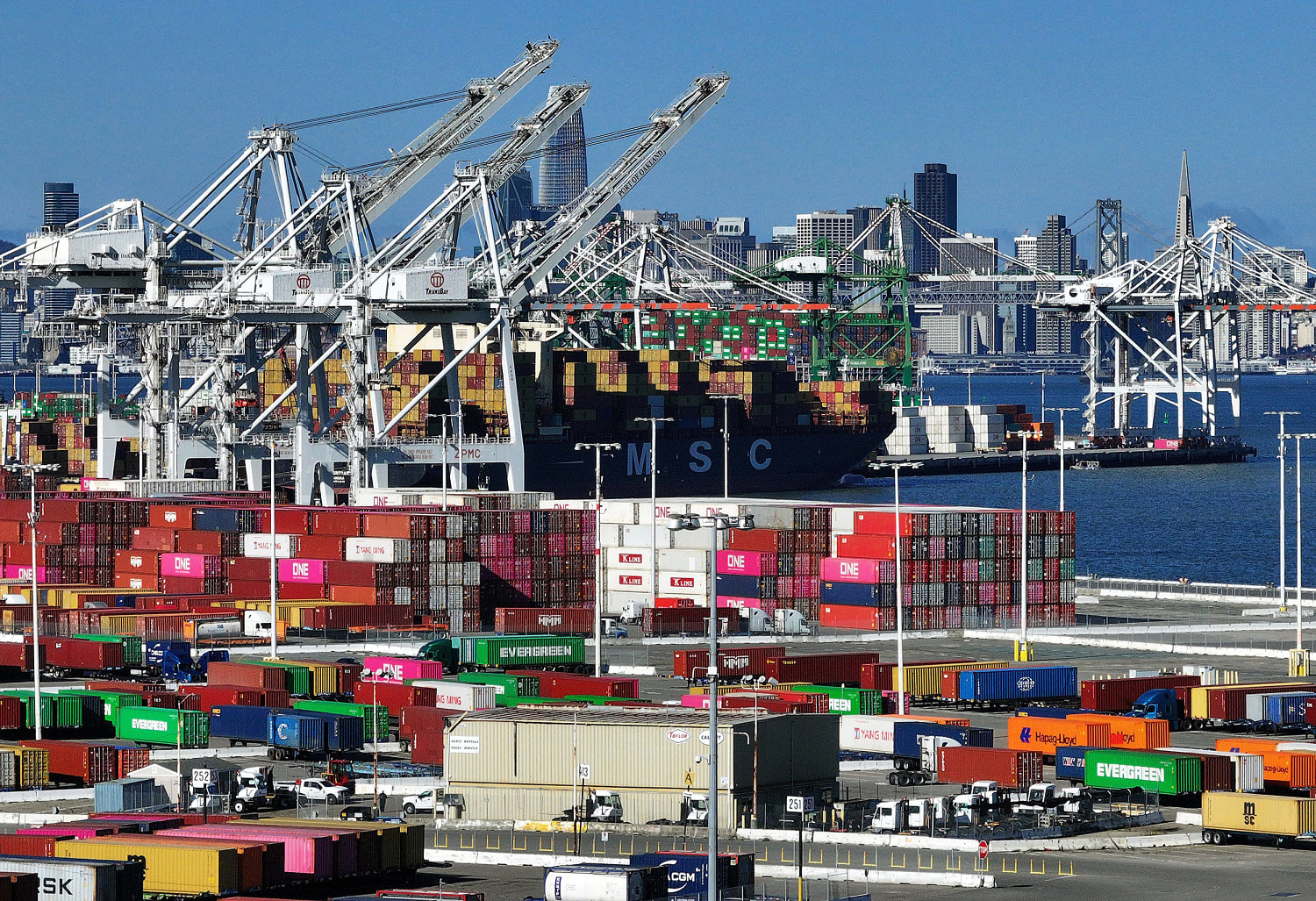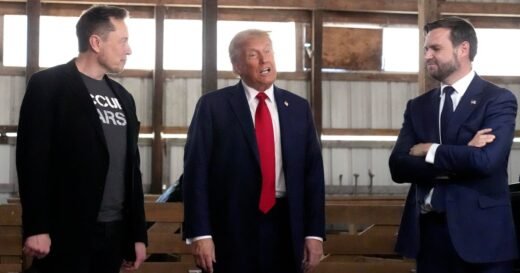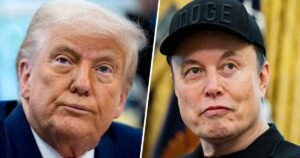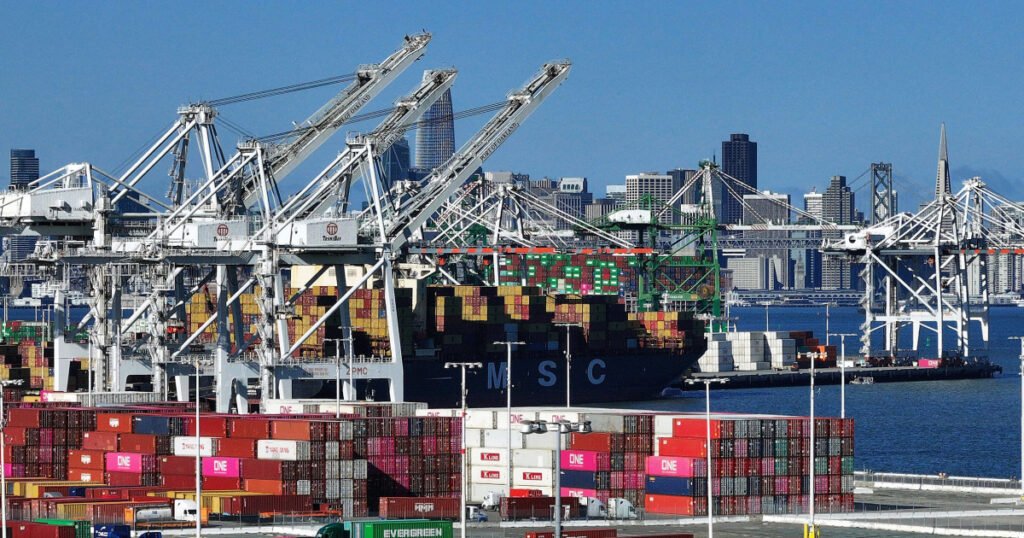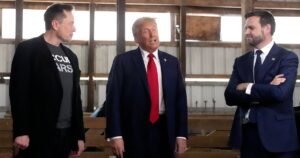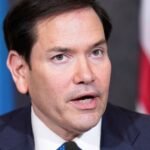At the core of President Donald Trump’s decision to impose sweeping tariffs on U.S. trading partners is a fixation on closing, if not reversing, America’s trade deficit with nearly all of them.
But most economists say Trump appears to demonstrate a fundamental misunderstanding of what having a trade deficit with another country actually means — a fact that is at the heart of the stunning market meltdown over the past several days.
A trade deficit simply means a country is importing more goods and services from a given country than it is exporting to them.
Maintaining a deficit usually says little about the state of a country’s economy. The U.S. trade deficit instead simply reflects the fact that the U.S. is a consumption-based economy. Even with the deficit, the U.S. has maintained strong domestic growth.
Whether it is sourcing goods that the U.S. no longer produces, or which can be produced more cheaply elsewhere, large American import levels reflect strong demand for goods — and the U.S. economy as a whole generally benefits from this arrangement, said Vance Ginn, an economist and adviser in Trump’s first term.
“Trade helps us to be better off,” Ginn told NBC News.
As the Congressional Research Service reported in 2018, Trump’s fixation on reversing the deficit “contrasts with the views of most economists.”
Countries with large trade surpluses, such as China, Russia and Saudi Arabia, tend to be heavy exporters of natural resources with relatively lower rates of domestic consumption.
The rest of the world with trade surpluses tend to be small, developing nations.
Trump has indicated he may nevertheless prefer the U.S. to more closely resemble this group of nations. In his executive order laying out his new administration’s trade priorities, “investigating the causes of our country’s large and persistent annual trade deficits in goods” was the first item listed.
Asked what Canada and Mexico needed to do to avoid sweeping new 25% tariffs, Trump said: “They have to balance out their trade, number one. We have deficits with almost every country — not every country, but almost — and we’re going to change it.”
Because Americans tend to buy more and save less than those in other countries, a deficit persists. Economists are nearly unanimous that Trump’s call for tariffs to reverse the deficit would raise costs for U.S. consumers — and the president himself has acknowledged their imposition will likely lead to “pain” for some time.
America’s transition away from its industrial sectors has been far from cost free.
In testimony before the U.S. Senate in 1998, Robert Scott, an economist with the left-leaning Economic Policy Institute, said trade imbalances had likely contributed to 2 million manufacturing job losses from 1979 to 1994, with hundreds of thousands resulting from the 1992 North American Free Trade Agreement alone — a pact Trump repeatedly criticized before replacing it with the United States-Mexico-Canada-Agreement in 2018.
Along with the lost jobs was the effect on wages, Scott said. Since 1979, Americans’ inflation-adjusted earnings have risen only by 12%, even as the size of the overall U.S. economy has grown exponentially during the same period. Wealth inequality, too, has accelerated during this time.
Ironically, many of these same arguments are now being cited by “conservative” Trump defenders.
However, overall household incomes, and thus standard of living, have climbed much more, thanks largely to gains from the stock market and rising home prices.
Most economists believe that at this point, it would be extremely difficult to bring back a meaningful number of manufacturing roles: Technology has now advanced to the point where many of the roles that prevailed in America’s golden age of manufacturing have been automated; and in order for the U.S. to re-shore manufacturing and high-intensity-labor work, wages would likely have to fall.
Meanwhile, the manufacturing jobs that the U.S. still does maintain actually benefit, on average, from lower trade barriers. And in some cases, recent federal programs are designed to prop up key industries like semiconductor manufacturing.
“The tradeoffs from these tariffs are too high,” Ginn said. While politically speaking there might be a reason to use them in certain circumstances, he said: “There’s got to be a better way than using them as blunt instrument. Ultimately, they hurt Americans — they’re taxes on Americans.”
